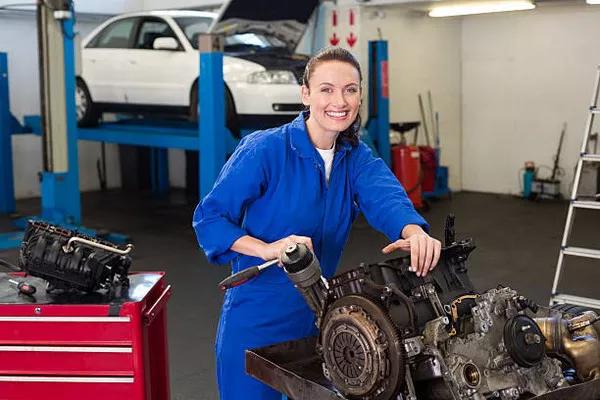During the 2020 coronavirus lockdown, Gary Surman, a skilled engineer at West Midlands precision engineering subcontractor A&M EDM, seized the opportunity to fulfill a longstanding ambition: enhancing the performance of the A-series Classic Mini engine block. Gary believed that modern engine technology could elevate the racing potential of the original engine.
A&M EDM embarked on the ambitious project, leading to the creation of a road race version of the engine block, meticulously machined from solid aluminum. Remarkably, this new block weighed a mere 20.5 kilograms, a significant reduction from the original 32 kilograms. Notably, it featured five fully functional main bearings, a substantial improvement from the original three.
Recognizing the potential of this innovation, Gary Surman and A&M’s managing director, Mark Wingfield, established a separate entity, Ascaso Engineering, dedicated to further developing and marketing the enhanced engine. Mark Wingfield shared Gary’s vision, recognizing that a proprietary product could significantly contribute to the long-term growth of the precision engineering subcontractor.
The manufacturing process for the engine block was a marvel of modern engineering. A&M employed a Hurco VMX42Ui 5-axis VMC for precision machining, allowing for high feed rates of up to 10 meters per minute. The crankshaft, a critical component of the engine, was crafted from a solid billet using PowerMill technology. The machining process was further enhanced with the use of the swiveling B-axis of a Hurco VMX60SRTi VMC, synchronized with the movements of a Kitagawa GT320 rotary 4th axis table.
Gary Surman explained, “We have manufactured precision components for Formula One, aerospace, automotive, and marine industries for many years and applied our engineering skills to manufacture this engine. The original had three main bearings, but the new version has five, so it can rev at higher speeds up to 10,000 rpm and accept a load over 350 BHP.”
The result of this meticulous engineering endeavor was the A+5 1273 cc K16V turbo engine, which underwent successful circuit testing in December. Mini racer Jim Lyons, who played a pivotal role in the development process, had his Mini laser-scanned for reverse-engineering purposes, facilitating the adaptation of the engine to the vehicle.
Jim Lyons had the opportunity to test the 1273cc Turbo version in a race at Brands Hatch in August 2023. The engine’s outstanding performance led him to finish in fifth place, marking a significant achievement. He noted, “The engine is outstanding. Gary and the rest of the A&M team have done a fantastic job. The quality of the machining is better than I’ve ever seen before. The engine runs cool, so all the cooling issues I’ve had for 20 years have gone. Racing, I can really feel the difference in the weight of the engine. The Ascaso engine has a bullet-proof bottom end, so we can really start to get some big power.”
The project doesn’t stop at the 1273cc engine. A&M has also developed the 1071cc KAD Gen3 16v turbo engine, which will be used in a land speed record attempt in Bolivia in 2024, aiming for an impressive 427 BHP. This engine, tested “out of the box as designed,” will be marketed as the 1071cc 16v TS, paying homage to the iconic Cooper S 1071cc engine.
A&M’s innovative engines cater to a range of classic Mini enthusiasts, offering different capacities from 1071cc to 1400cc compatible with BMW K16V and 12G940 heads. The company anticipates a global demand from Mini racing enthusiasts eager to experience the enhanced performance these engines bring to their beloved classics.

